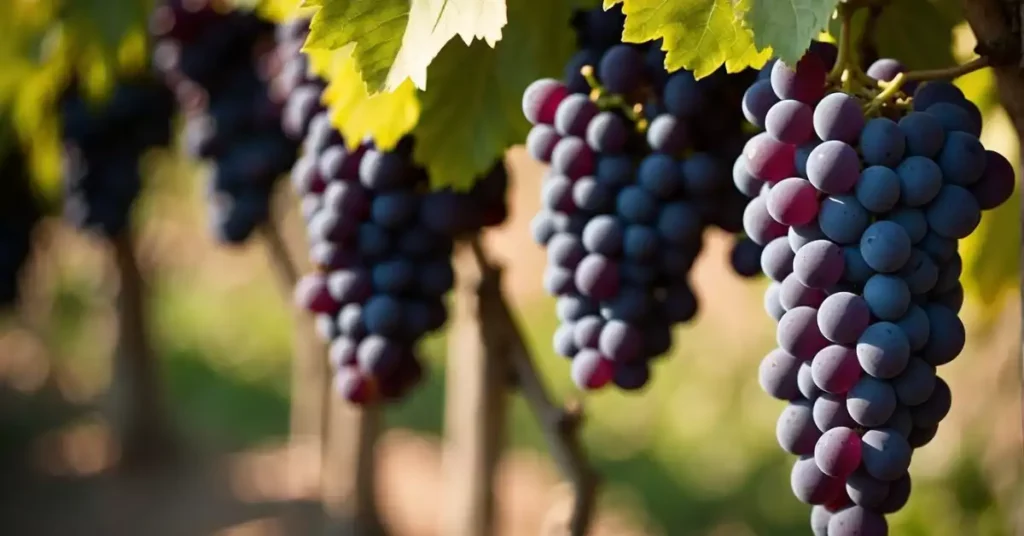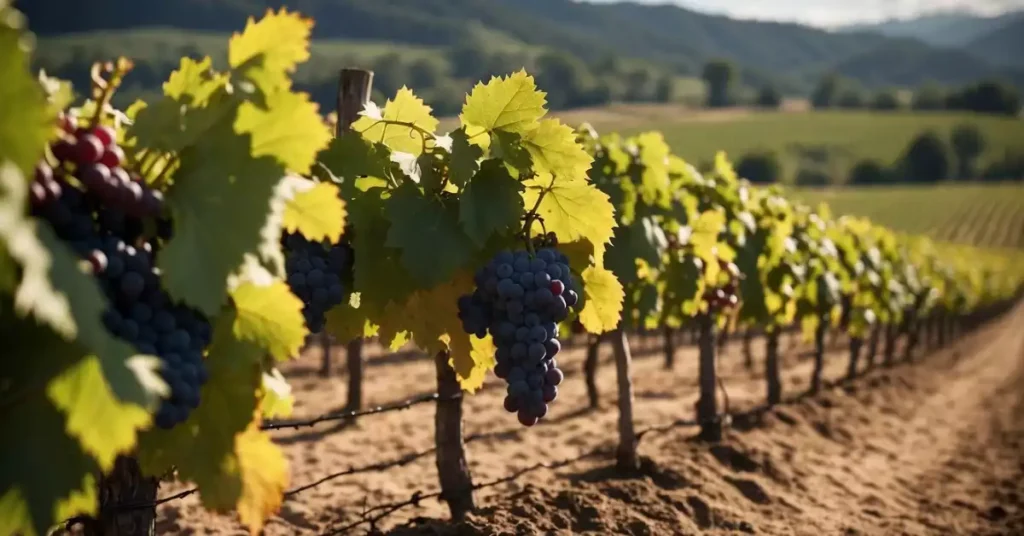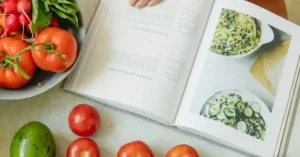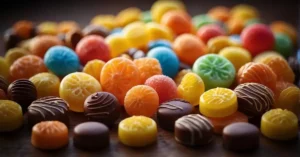Germany is renowned for its beer production. Yet, this statement doesn’t quite capture the full picture. Indeed, beer often comes to mind when considering Germany. However, Germany is equally esteemed for its viticulture. A number of popular grape varieties originate from Germany and thrive in its sun-drenched regions. Thus, this article will concentrate on the exquisite wines of Germany. We’ve gathered our insights and aim to ignite your passion for this delightful beverage through this article. Let’s embark on this journey.
Overview of German Wine
When you think of Germany, it’s likely that precision, rich history, and a vibrant culture come to mind. But let’s not overlook one of its most delightful offerings: German wine. Nestled in various regions, each with distinctive climates and soils, German vineyards produce an impressive variety of high-quality wines, with an emphasis on white wines like the celebrated Riesling.
| Region | Notable Varieties | Characteristics |
|---|---|---|
| Mosel | Riesling, Elbling | Steep slopes, slate soil |
| Rheingau | Riesling, Spätburgunder | Lush, full-bodied |
| Pfalz | Riesling, Silvaner | Warm, almond notes |
| Baden | Spätburgunder, Müller-Thurgau | Warmest region, ripe reds |
German wine laws ensure quality control by dictating certain standards, such as the Oechsle scale measuring grape sugar levels. Riesling, your premier grape, thrives across various regions, from the steep banks of the Mosel to the warmer Pfalz. It’s versatile, ranging from bone-dry to lusciously sweet, capturing your palate with its high acidity and stone fruit flavors.
For red wine enthusiasts, Spätburgunder—Germany’s answer to Pinot Noir—offers a lighter, aromatic experience, perfect for those who appreciate a subtler red.
The backbone of German wine production lies in its vineyard management, where winemakers combine tradition with modern techniques to draw out the unique essence of every grape variety. So whether you prefer the crisp notes of a Silvaner or the complex layers of a Riesling, you’ll find that German wines encapsulate the spirit and the terroir of their homeland with every sip.
Major Wine Regions

Germany’s diverse wine regions are renowned for producing a variety of high-quality wines that you’ll love exploring. From the steep slopes of the Mosel Valley to the warm vineyards of Baden, each region has its own unique characteristics and specialties.
Mosel Valley

In the Mosel region, you’ll find some of the world’s most celebrated Rieslings. Vines here benefit from the mineral-rich slate soils and steep riverbank vineyards, which contribute to the wines’ distinct taste and elegance—characteristics synonymous with Mosel-Saar-Ruwer.
Rheingau and Nahe

The Rheingau is another premier wine region, famous for its full-bodied and aromatic Rieslings. With a long winemaking history, it’s a region of both tradition and innovation. Neighboring Nahe offers diverse soil types, bringing an intriguing variety of flavor profiles to its wines.
Pfalz and Rheinhessen
Pfalz and Rheinhessen regions are among the largest in Germany. While Pfalz produces a range of wine styles thanks to its warm climate, Rheinhessen is best known for its young, fresh wines that provide an accessible introduction to German viticulture.
Baden and Württemberg

Heading south to Baden, you’ll discover Germany’s warmest region, ideal for growing a variety of grapes, including the noble Spätburgunder (Pinot Noir). Similarly, Württemberg is home to various red grapes and is known for its traditional Trollinger wine.
Smaller Regions
Don’t overlook smaller regions such as Ahr for its exceptional Pinot Noirs, Franconia (Franken) for its distinctive Silvaner wines, or Mittelrhein for Riesling with remarkable character. The Hessische Bergstraße offers aromatic wines in a picturesque setting, while Saxony (Sachsen) is noted for its picturesque vineyards and quality wines despite being one of Germany’s smallest wine regions.
| Wine Region | Notable Wines | Unique Characteristics |
|---|---|---|
| Mosel | Riesling | Slate soils, steep vineyards |
| Rheingau | Riesling | Full-bodied, aromatic wines |
| Nahe | Various | Diverse soils, flavorful profiles |
| Pfalz | Riesling, Spätburgunder | Warm climate, varied styles |
| Rheinhessen | Young, fresh wines | Largest wine region |
| Baden | Pinot Noir | Warmest German region |
| Württemberg | Trollinger, Lemberger | Traditional red wines |
| Smaller Regions | Varies | Diverse climates and terrains |
This table gives you a glimpse of what each main German wine region can offer. Remember, every bottle tells a story of its origin, so take the time to explore these captivating regions.
Grape Varieties

Germany’s diverse wine landscape offers you an impressive array of grape varieties, each bringing a unique flavor to the table. From the world-renowned Riesling to the robust Spätburgunder, you’ll discover a rich tapestry of grapes that are the heart of German viticulture.
Popular White Grapes
- Riesling: This is Germany’s flagship white grape variety, celebrated for its expressive aromatics and complex flavor profile. It ranges from bone-dry to lusciously sweet wines.
- Müller-Thurgau: A cross of Riesling and Madeleine Royale, this grape ripens early and delivers wines with a mild, flowery taste and a hint of nutmeg.
- Silvaner: Known for its understated and earthy wines, Silvaner pairs excellently with food and often reflects the terroir in which it is grown.
Red Wines and Their Grapes

- Spätburgunder: Also known as Pinot Noir, this grape is responsible for Germany’s elegant and velvety red wines, offering a wide range of styles from light and fresh to complex and aged.
- Dornfelder: A leading red variety that creates deep-colored, fruit-forward wines with a pleasantly smooth texture.
| Grape | Wine Characteristics | Typical Region |
|---|---|---|
| Spätburgunder | Elegant, aromatic, can be aged for complexity | Ahr, Baden |
| Dornfelder | Deep color, berry flavors, velvety | Pfalz, Rheinhessen |
| Trollinger | Light-bodied, fresh with a slight sweetness | Württemberg |
| Lemberger | Also known as Blaufränkisch, spicy and full-bodied | Württemberg, Baden |
| Domina | Deep color, spicy and powerful | Franconia |
Unique German Varietals
- Pinot Gris: In Germany, better known as Grauburgunder, it presents a fuller body compared to its Italian counterpart, often with a rich and slightly spiced flavor profile.
- Scheurebe: A cross between Riesling and an unknown partner, this grape offers aromatic wines with a distinctive note of blackcurrant.
By exploring these grape varieties, you can experience the true essence of German wine, with each sip revealing a part of Germany’s vinicultural soul.
Wine Styles and Classifications

Exploring German wines offers a delightful journey through a variety of wine styles and a classification system steeped in tradition. You’ll encounter everything from crisp, dry Rieslings to the lusciously sweet Eiswein, along with a legal framework that guarantees the quality of wine in your glass.
Predominant Wine Styles
German wine styles vary widely, reflecting the country’s diverse climates and winemaking traditions. The styles range from dry (trocken) to sweet, including world-renowned Riesling that can span the spectrum of sweetness levels. Sekt is the term for German sparkling wine, and it’s available from bone dry to sweet as well; these effervescent wines make a delightful choice for celebrations or a refreshing aperitif.
Among the sweet wine offerings, you’ll find Eiswein, made from grapes frozen on the vine, resulting in an intensely concentrated, sweet wine. Other notable mentions are the prestigious Beerenauslese and Trockenbeerenauslese, both made from individually selected berries, often affected by noble rot, enhancing their sweetness and complexity. Auslese, Spätlese, and Kabinett are terms you’ll frequently see that indicate increasing levels of ripeness and potential sweetness in the grapes at harvest.
| Style | Description |
|---|---|
| Dry (Trocken) | Fully fermented, no residual sugar |
| Halbtrocken | Off-dry, with a slight sweetness |
| Kabinett | Light wines made from grapes of the main harvest |
| Spätlese | Made from later harvest grapes, more ripe, can be dry or sweet |
| Auslese | Select harvest of very ripe grapes, richer in flavor |
| Beerenauslese | Made from individually selected overripe berries |
| Trockenbeerenauslese | Made from selected dried grapes, very sweet and concentrated |
| Eiswein | Made from grapes that have been frozen while still on the vine |
| Sekt | German sparkling wine, varies in sweetness |
German Wine Classification System

German wine labels offer a wealth of information, but deciphering them can be daunting without understanding the German Wine Classification System. At the base of the pyramid are Deutscher Wein (formerly Tafelwein) and Landwein, which are similar to table wine.
Moving up, we have Qualitätswein (Quality Wine), which must come from one of the 13 specific wine regions, noted as Qualitätswein bestimmter Anbaugebiet (QbA). Then, the highest quality tier, Prädikatswein, denotes wines with special attributes and includes Kabinett, Spätlese, Auslese, Beerenauslese, Trockenbeerenauslese, and Eiswein. These wines follow strict regulations regarding grape ripeness and region of origin.
A curiosity on some labels is Liebfraumilch, a style of wine that’s often exported and known for its sweet and approachable profile. Remember that vintage, the year stated on the label, can tell you a lot about the conditions and weather patterns that influenced the grapes during that growing season.
Remember, while exploring German wines, your personal taste preferences are paramount. Whether you enjoy a crisp, refreshing Trocken or savor the richness of a Beerenauslese, there’s a German wine that’s certain to captivate your palate.
Winemaking in Germany

You’ll find that viticulture has deep roots in Germany, with traditions stretching back to Roman times. Today, German wine stands out for its variety and quality, something you’ve likely noticed in the distinct flavors and character of each bottle.
Viticulture & Vineyards
German vineyards are typically found in the country’s western regions, notably along the Rhine River and its tributaries. These locations offer a unique terroir that plays a pivotal role in the quality of German wines.
| Region | Known for |
|---|---|
| Mosel | Riesling |
| Rheingau | Spätburgunder (Pinot Noir) |
| Pfalz | Diverse varietals |
The age of the vineyard can signal the potential for complexity in the wine. Older vines, when well-maintained, produce grapes with more concentrated flavors.
Ripeness & Noble Rot
Ripeness is meticulously monitored; certain wines are famous for the influence of noble rot, which can add a desirable complexity and sweetness. The harvest period thus becomes a carefully timed dance with nature to ensure grapes are picked at their optimal ripeness.
Vinification & Wine Production
Once the grapes reach the cellar, the grower’s task switches to vinification. This is where the grapes transform into the German wine you know. From white to red, sparkling to late-harvest sweet wines, the variety is rich and expansive.
Wine production in Germany often blends traditional methods with modern techniques, ensuring that the wines you enjoy continue to reflect their storied heritage while meeting contemporary palates’ expectations.
Tasting Notes

When you’re exploring German wines, your palate dances through a spectrum of experiences, from crisp apple-like acidity to honeyed sweetness. Every sip tells the story of the region’s diverse climatic and soil conditions.
White Wines
White wines from Germany, particularly Riesling, are renowned for their incredible range of flavors and styles. Below is a table to guide you through the diverse profiles of German white wines:
| Wine Variety | Acidity | Sweetness | Body | Flavor Notes |
|---|---|---|---|---|
| Riesling | High | Varies; dry to sweet | Light to medium | Fruity with peach or apple; sometimes hints of honey or herbs |
| Gewürztraminer | Medium | Often sweet | Full-bodied | Rich and aromatic with lychee and floral notes |
German white wines are meticulously crafted to balance acidity with sweetness, and you may find that even fuller-bodied options retain a refreshing finish. Lighter wines delight with their delicate fruity notes, while the sweeter selections envelop your taste buds with a soft, honey-like quality.
Red Wines

German red wines may not be as globally famous as their white counterparts, but they deserve your attention for their unique qualities.
| Wine Variety | Acidity | Sweetness | Body | Flavor Notes |
|---|---|---|---|---|
| Spätburgunder (Pinot Noir) | Medium to high | Dry | Light to medium | Often fruity with cherry or berry flavors; can have earthy undertones |
| Dornfelder | Low to medium | Off-dry to sweet | Medium to full-bodied | Typically fruity with a touch of spice |
While the Spätburgunder entices with its elegant, sometimes earthy flavors and moderate acidity, Dornfelder offers a bolder, fruitier profile with a body that ranges from medium to full. Whether you prefer a nuanced, lighter red or something richer and more expressive, you’ll find a German red wine that suits your palate.
Food Pairings and Enjoyment

Exploring German wine offers a delightful adventure for your palate, particularly when paired with the country’s rich cuisine. The harmonious combination of food and wine enhances the flavors in each, making every meal a celebration.
| Wine Type | Recommended Pairings |
|---|---|
| Riesling | Apple-flavored dishes, Light seafood |
| Spätburgunder | Roasted meats, Earthy mushroom dishes |
| Grauburgunder | Grain-based salads, Creamy cheeses |
| Weissburgunder | Smoked fish, Crisp summer salads |
When indulging in German wine, consider the balance between the wine’s acidity and the fatty or sweet nuances of your delicacies. A refreshing glass of Riesling dances perfectly alongside spicy foods and sushi, cutting through the heat and complementing the taste of the sea.
For those who prefer a robust red, Spätburgunder, Germany’s Pinot Noir, brings warmth to dishes like beef stew and venison. The red wine’s soft tannins and dark fruit notes offer a comforting embrace to these heartier meals.
Discovering the right food pairing not only elevates the taste of your dish but also the drinking experience. While beer and gin are popular in German gastronomy, there’s something unexpectedly delightful about finding the perfect food pairing for a glass of white wine or red wine. Whether you’re enjoying a traditional schnitzel or a modern German fusion dish, there’s a German wine that will undoubtedly broaden your cuisine horizons and heighten your enjoyment.
The Global Context
The German wine industry has been adapting to the changing global climate, an aspect that could reshape its standing in the international market.
Comparisons with Other Wine Regions

German wines offer unique characteristics that are increasingly celebrated on a global scale. In a comparison with other major wine regions, such as France and Italy, German wines stand out particularly for their Rieslings, valued for their crisp acidity and aromatic profile. Quality improvements in German viticulture have led to exceptional vintages like the heralded 2019, cited for its potential to achieve remarkable acclaim.
| Region | Notable Varietals | Climate Influence |
|---|---|---|
| Germany | Riesling, Spätburgunder | Cooler, benefiting from warming |
| France | Cabernet Sauvignon, Chardonnay | Diverse, ranging from maritime to continental |
| Italy | Sangiovese, Nebbiolo | Mostly Mediterranean |
Export and Influence
Your awareness of the influence German wine has internationally may deepen when you consider the statistics: in 2021, export values hit the highest level in over twenty years. This demonstrates the growing global value of German wine, a clear sign of its expanding influence. Not only is Germany exporting more, but the demand for German wine has increased around the world, signifying a positive trend within the global wine market.
Principal Export Destinations:
- USA: Showcasing a fondness for premium German wines.
- United Kingdom: Displaying consistent growth in German wine imports.
- Nordic Countries: Emphasizing sustainability and organic choices.
Through these interactions, German wines are not just sharing their flavors but also their winemaking philosophies and innovation strategies, contributing to the diversification and richness of the global wine scene.
Responsibility and Trends

You’re witnessing a dynamic era in the wine industry, where sustainable viticulture, organic practices, and biodynamic farming are more than just trends—they’re commitments to earth and quality that German winemakers are taking seriously. Driven by a desire to preserve the environment and ensure the longevity of winemaking, producers are adopting innovative techniques that respect the land.
| Sustainability Initiatives | Description |
|---|---|
| Sustainable Viticulture | Reducing chemical use and preserving local ecosystems. |
| Organic Certification | No synthetic pesticides or fertilizers used. |
| Biodynamic Methods | Farming in harmony with the biodynamic calendar. |
| Innovation in Production | Technology to monitor climate impacts and enhance quality. |
| Market Adaptation | Shifting varietals and styles in response to consumer demand. |
German wine has seen a shift in not only how it’s produced but also in market trends and climate change responses. Warmer temperatures are influencing grape ripeness, pushing winemakers to adapt in both cultivation and varieties produced. Meanwhile, the market sees a gentle nudge towards uniquely German grapes, such as Riesling, which has gained appreciation through its storytelling of terroir.
Your conscious consumption supports this evolution towards a more responsible industry. Embracing these wines means you’re part of a wave that prioritizes planet health alongside palate pleasure. As German winemakers continue to innovate, the wines you enjoy will reflect not only the history and character of their regions but also the forward-thinking practices that made them possible.
Our Opinion about German Wine
German Wine has an excellent reputation in the wine world. And rightly so. In our opinion, the sunny slopes of the Moselle are home to unbelievably great vines, with which we can produce one of the best wines in the world. Discover German wines in your own home or take a trip to the region. You can explore, taste and buy the products on site at many winegrowers. In combination with a multi-day bike tour through the wine regions, this is a great way to get to know Germany from its most beautiful side. Just give it a try.
FAQ about German Wine
What are the main grape varieties used in German wine?
Riesling, Müller-Thurgau, and Spätburgunder are the most common.
What are the different wine regions in Germany?
The major wine regions include Mosel, Rheingau, and Pfalz.
What is the sweetness level of German wines?
German wines are classified based on ripeness levels, from dry (trocken) to sweet (süß).
Did you discover the German Wine Culture? Do you have any favorites? Let us know in the comments below about your opinion.






